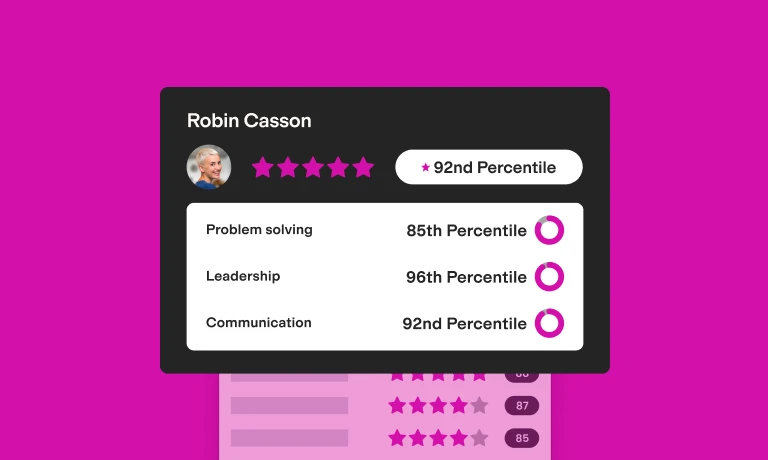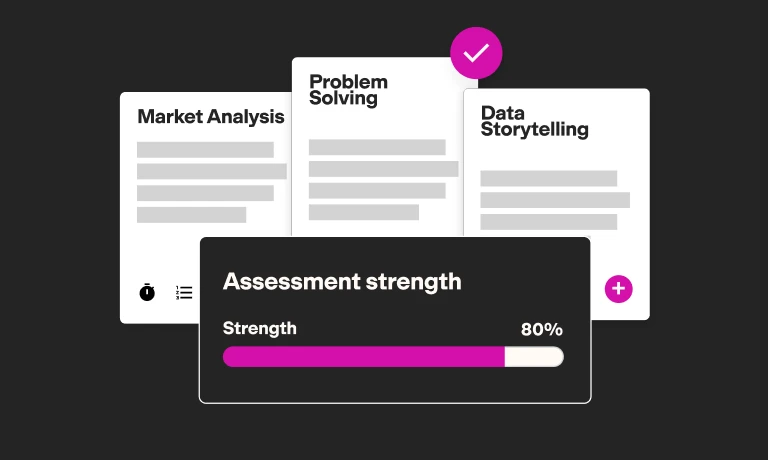“Work is not a ‘place’ – it’s ‘what people do.’ You and your leadership have to trust people. Give them clarity, mission, skills, and growth – they will figure out how to get work done. Trust remains one of the most important tools you have.” [1]
I couldn’t agree more with the above quote from HR expert Josh Bersin. So it frustrates me to no end that the return-to-office debate continues to rage, with several high-profile CEOs recently requiring workers to come back to the office full time.
The evidence is clear. Flexible work arrangements – specifically hybrid workplaces – are better for employees and employers. In this article, I take a closer look at why and make the case for radical flexibility in the workplace.
What CEOs are saying
Following a worldwide shift to remote work during the COVID-19 pandemic, some employers are pushing employees to return to the office full-time.
KPMG surveyed 1,325 CEOs for its 2024 CEO Outlook report and found that 83% of CEOs expect a full return to the office within three years. (Interestingly, this expectation increased for older and male CEOs.)
In line with this, several large companies have already issued return-to-office mandates:
Amazon requires employees to be back in the office full time by 2025.
Dell’s CEO announced the company was retiring its hybrid work policy, requiring workers who live near the office to return full-time.
Since 2022, Goldman Sachs has “continued to encourage employees to work in the office five days a week.”
JP Morgan workers must be in the office five days a week. The CEO responded to a question about an online petition against the move by saying, “Don’t waste time on it. I don’t care how many people sign that f**king petition.”
The problem with this is the total absence of any convincing argument for why employees must be in the office five days a week.
Some CEOs argue that fostering a strong workplace culture requires everyone to be in the office. But company culture isn’t attached to a physical workspace. It’s an intangible asset built through shared values, consistent leadership, and meaningful interactions. Open communication, inclusion, and transparency contribute to a thriving culture – not an office space.
A fully remote business can still have an excellent company culture. (How do I know this? I work at TestGorilla – a fully remote company with a high-performing global workforce and a culture built on actionable behaviors.)
Others say it’s better for collaboration and sharing ideas. However, this argument loses its force given the explosion of technology to support remote collaboration and hybrid work.
Tools like Google Workspace, Microsoft Teams, Slack, Loom, Asana, Zoom, and Notion make it easier and quicker for employees to collaborate. The emergence of generative AI in the workplace is also already streamlining remote work.
Some CEOs are using return-to-office mandates for more nefarious reasons – reducing their workforce without issuing formal redundancies.
Unlike some CEOs in the private sector, Elon Musk and Vivek Ramaswamy of the US Department of Government Efficiency (DOGE) just came out and said it – part of their plan to make federal workers return to the office full-time was that they expected “a wave of voluntary terminations” to help reduce the federal workforce.
If employers need to reduce their workforce, forcing workers to return to the office is a risky way to do it. You have no control over who leaves (including top talent and experienced workers, which I discuss in more detail below). Plus, you risk undermining employee trust.
Why do CEOs really want employees back in the office?
In a memo to staff in September 2024 about returning to the office full-time, Amazon CEO Andy Jassy wrote:
“We’ve observed that it’s easier for our teammates to learn, model, practice, and strengthen our culture; collaborating, brainstorming, and inventing are simpler and more effective; teaching and learning from one another are more seamless; and, teams tend to be better connected to one another.”
With CEOs so sure of the benefits of full-time working from the office, there must be mountains of empirical evidence to support this, right? Nope.
So, what’s really going on here?
I think the push for workers to return to the office comes from a place of insecurity. CEOs want people in the office to monitor them and ensure they’re actually working. They worry that they lose control by letting people work from home and that things won’t get done if employees aren’t always watched.
The irony is that the opposite is often true, as I discuss more below. Workers often describe feeling more productive at home, without the daily distractions of office gossip, workplace politics, and regular interruptions.
It also reveals an entirely misguided mistrust of employees. People generally take pride in their work and want to do a good job, especially if you’ve created a positive and inclusive company culture. They’re trustworthy – if you give them that trust in the first place. Success doesn’t result from Big Brother watching. It comes from empowering employees with autonomy and creative freedom.
The best insights on HR and recruitment, delivered to your inbox.
Biweekly updates. No spam. Unsubscribe any time.
What do employees want?
Different employees want different things. Some are happy to return to the office full time, while others prefer to work entirely remotely. Where employers can, they should offer employees the choice to work the way they want.
For the overwhelming majority of employees, this is hybrid or fully remote work. According to the most recent Gallup data, 60% of remote-capable employees prefer hybrid work arrangements, while 33% prefer exclusively remote.
For many employers (55% of US work locations, according to Gallup), the answer is a hybrid work model. This gives workers the freedom to choose the work arrangements that best suit their needs and offers the best of working from home and in the office.
However, many employers – especially those with knowledge workers – can and should let their teams work fully remotely.
Why do most employees prefer hybrid work?
The preference for hybrid work showcases employees’ desire for flexibility. Gallup’s data suggests that while they enjoy the better work-life balance, increased productivity, and reduced burnout and fatigue that working from home offers, they also see some benefits of being in the office part-time. These include relationship-building, in-person discussions with management, and collaboration.
Let’s take a closer look at some reasons employees prefer hybrid work arrangements (many of which also logically apply to fully remote work).
Better work-life balance
Gallup’s data reveals that 76% of hybrid employees say better work-life balance is the top advantage of their working arrangements.
Employees gain hours in their day without having to commute. With their extra time, they can spend time on their hobbies or passions to properly switch off from work and return refreshed. They can adjust their hours to accommodate caregiving responsibilities, which is a huge win for many working parents.
Lego’s Best of Both policy allows employees to work a combination of days in the office and from home. One employee explains why it works so well for her work-life balance, saying, “I don’t have to sacrifice certain aspects of my life to be able to do my job. I don’t have to juggle it, I can just do both.”
Improved well-being
Employees are also less stressed when they have the flexibility to work from home. In a 2024 survey by International Workplace Group, 86% of hybrid workers say they feel better able to cope with day-to-day life when they have flexible work arrangements.
Forcing workers back to the office isn’t just going to impact their well-being – it can foster resentment. Just look at the petition signed by JP Morgan workers (with nearly 2,000 signatures), which describes workers left feeling “betrayed and devalued”.
Individual cost savings
The opportunity to work remotely offers employees significant cost savings. Employees don’t have to pay for public transport, fuel, parking, or buying lunch or coffee out when working from home.
These may sound like minor savings, but they add up quickly. According to estimates by Global Workplace Analytics, working from home half the week saves employees between $600 and $6,000 a year.
More inclusive
Employees also like remote and hybrid work arrangements because they make jobs more accessible, especially for employees with disabilities and older workers.
Recent research from the UK, led by Lancaster University, found that almost one-fifth of employees who mainly work from home have disabilities and that working from home positively affected 80% of employees who work from home full-time.
Why is this? Julie White, founder of Bright White Life Coaching and Training, speaking to People Management, says, “Flexibility around when, where and how work is completed can significantly reduce barriers, from managing fluctuating health conditions to creating more accessible, sensory-friendly environments.”
For these workers, even hybrid work arrangements don’t offer the level of flexibility they need. Fully remote work is often the answer to supporting equal access to opportunities and their participation in the workforce.
Companies that issue full-time return-to-work mandates make working almost impossible for these employees. I hate that companies enforcing return-to-office mandates don’t seem to care.
Hybrid work is also better for businesses
Here’s the kicker. CEOs insist on returning full-time to the office, despite what employees want and even though hybrid work is better for business.
Here’s why.
Reduced costs
Fewer employees in the office reduce the need for expensive physical office space and associated costs, like utilities, food, and cleaning.
For example, using a hot desk system – where employees don’t have permanent workspaces and instead use whichever workspace is available when they’re in the office – is a great way to minimize your workplace’s footprint and expenses.
Global Workplace Analytics calculates that employers can save up to $11,00 a year for every employee who works from home half-time.
Improved productivity
While business leaders often rely on improved productivity to justify return-to-office mandates, little evidence supports it. In fact, the opposite is true. Both employers and employees report better productivity due to flexible work arrangements.
In an IWG survey, four out of five CEOs said hybrid employees are more productive. They believe this directly results from workers feeling less stressed, with more time to relax and switch off from work. An earlier IWG survey found that employees feel the same, with 79% saying they’d increased productivity since moving to hybrid working arrangements.
Speaking to Reuters, managing director of creative agency Mythology, L. Parker Barnum, explains how flexible work makes him more productive:
“Avoiding the commute alone gives me back 3.5 hours a day, three days a week. That’s more than 10 extra hours a week – half of that spent working and half spent splitting household responsibilities with my wife and taking care of the kids.”
Decreased employee turnover
A recent randomized control trial by Nature uncovered a direct relationship between hybrid work and employee turnover. The trial studied 1,612 workers in a Chinese tech company and the effect of the most common hybrid working pattern – two days at home and three days in the office.
It found that this hybrid model reduced the number of employees who left by a third. It also improved job satisfaction and didn’t impact employees’ performance or promotions.
Other research offers insights into the types of employees most likely to leave in the wake of a return-to-office mandate.
Based on LinkedIn data for over three million tech and finance workers, this research found that businesses experience unusually high employee turnover due to return-to-office mandates, especially of female, senior, and more skilled employees. It also takes these businesses much longer to fill these vacancies.
This “brain drain” effect is disastrous for employers, who risk losing the experienced and skilled employees they’ve invested in. With a disproportionate impact on female employees, it also reduces workplace diversity.
Helps attract and retain top talent
It shouldn’t come as a surprise that job seekers demand flexibility.
In one of IWG’s surveys, 59% of CEOs report higher candidate attraction and retention from offering hybrid work arrangements. Mark Dixon, founder and CEO of IW, says, “CEOs realise that hybrid working is key to staying ahead in the race for talent… if you can offer [flexibility], you’re putting yourself at the head of the pack.”
If you’re instead asking employees to work in the office full time, the best candidates will look for employers that can offer flexible working arrangements.
A poll by People Management involving 1,921 people found that 77% of employees say that flexible work arrangements are more important than a pay rise when evaluating a new role.
Hybrid work also helps you attract more candidates. When geographic location isn’t essential to the role, you can accept applicants from a wider geographic area.
The future of work: 360-degree hybrid workplaces
When I think about the return-to-office debate, I keep returning to Josh Bersin’s quote. “Give them clarity, mission, skills, and growth – they will figure out how to get work done.”
Employees don’t need strict work schedules and Big Brother constantly watching to be productive. They need a positive work culture, autonomy, respect, and, most importantly, trust from their leaders.
For businesses that can operate remotely, this could mean building a fully remote workforce. Those wanting in-office workers should consider offering their workers flexible work arrangements, specifically the hybrid work model.
Regarding the future of work, I believe flexibility will be a priority for all employers. For some, this will involve embracing fully remote work. For others, the most forward-thinking will create radical 360-degree hybrid workplaces. What does this look like?
It involves thinking beyond the physical location of your workers when it comes to designing a hybrid workplace.
Some elements of 360-degree hybrid workplaces
Designing these workspaces involves considering specific strategies. Here are a few.
Flexible hybrid work arrangements
These allow employees to choose the days they want to be in the office. This further supports better work-life balance, allowing them to accommodate caregiving responsibilities, medical appointments, and other commitments within their workweek.
Flexible work hours
You can set core hours when employees must be available, but outside these, employees are free to work their hours as they please. For example, Raiffesien Bank has fully flexible schedules. Employees are free to choose their work hours between 7am and 7pm and can adjust their work hours so they work fewer hours on one day and more on another.
A focus on results rather than hours
For many workers, productivity isn’t about the number of hours they work but about their output. I’d love to see workplaces update their expectations and performance management to reflect this by de-emphasizing work attendance and focusing on work outcomes.
The winner of the return-to-office debate is clear
CEOs sending out return-to-office mandates need to get with the times. Flexible work that allows employees to work part-time or full-time remotely is better for their workforce and bottom line.
Hybrid work models in particular help boost employee productivity and well-being while reducing turnover and attracting top talent. They offer cost savings to individual employees and businesses alike.
There’s not debate. If employers want to stay competitive, hybrid or fully remote work aren’t just options – they’re the future of work.
You've scrolled this far
Why not try TestGorilla for free, and see what happens when you put skills first.




















